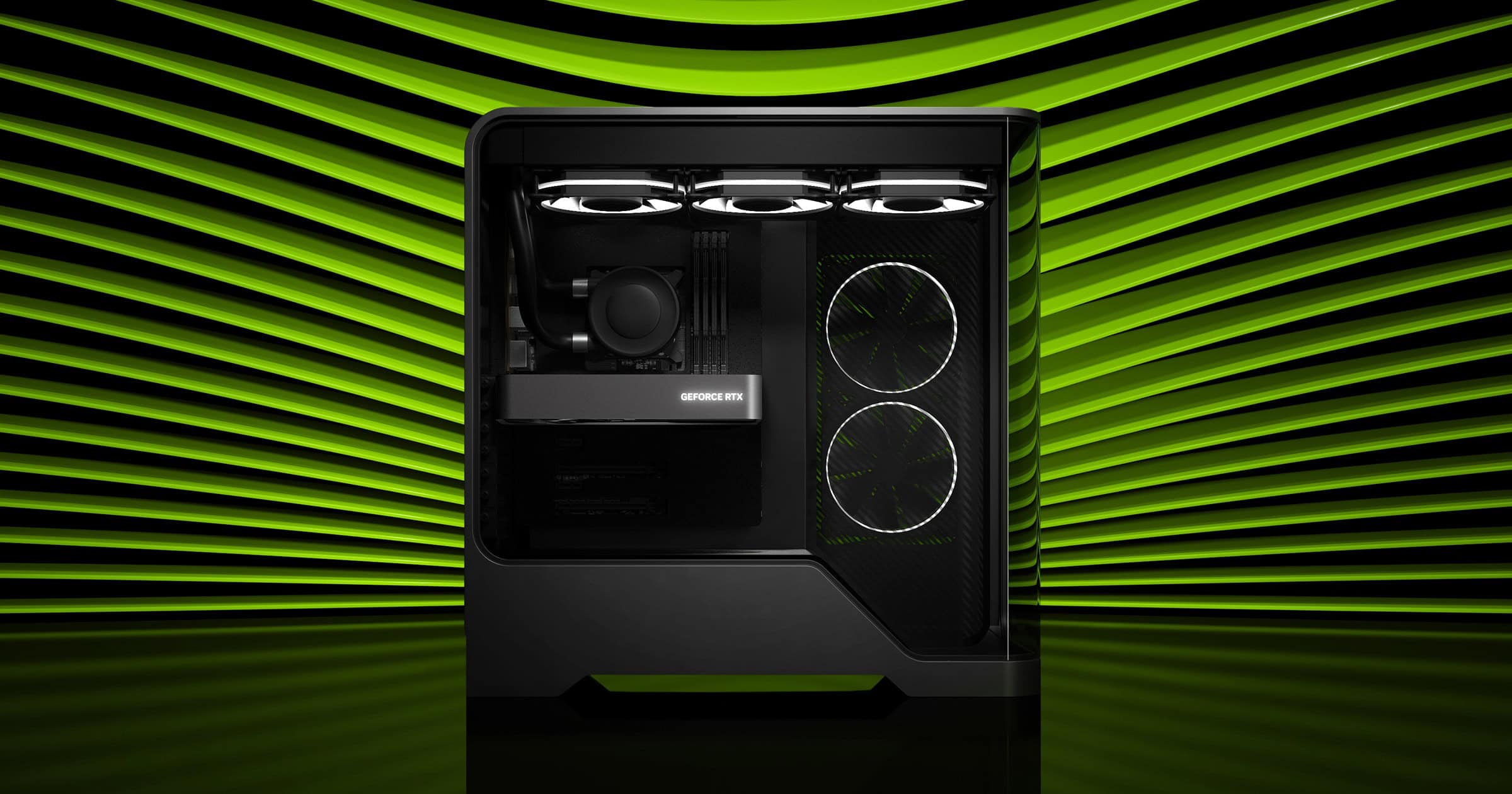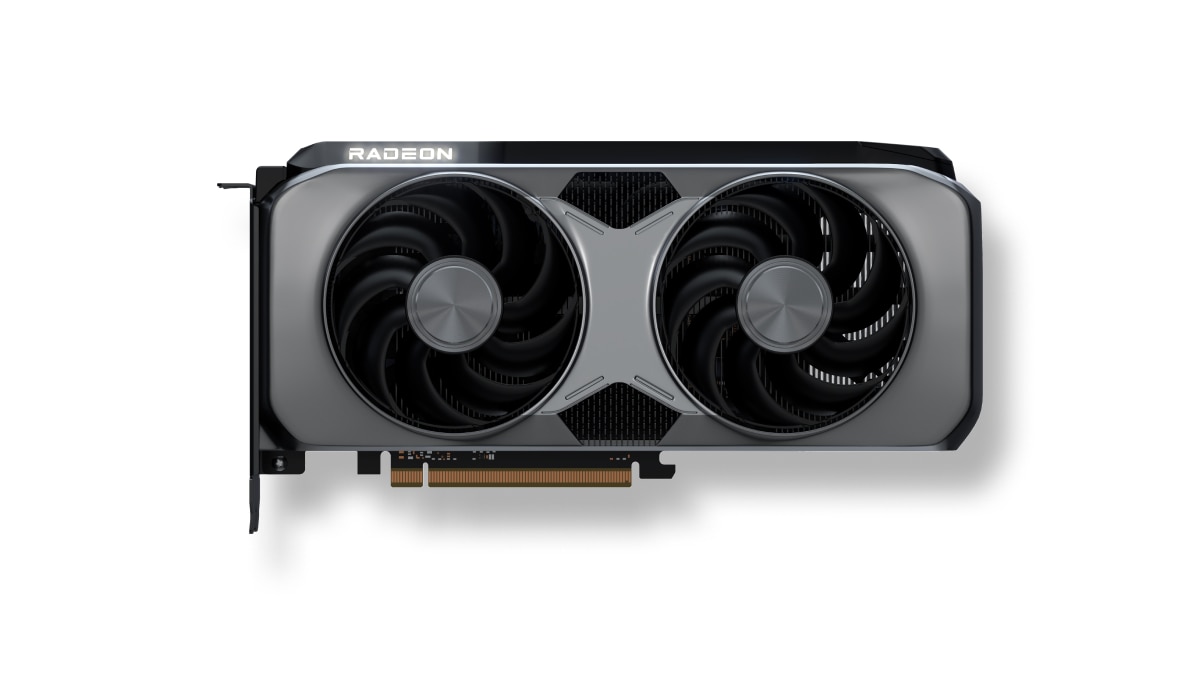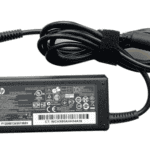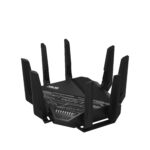With next-gen gaming heating up in 2025, the midrange GPU battlefield has become one of the most fiercely competitive segments—led by two standout contenders: NVIDIA’s GeForce RTX 5060 Ti and AMD’s Radeon RX 9070. Both promise strong 1440p performance, access to ray tracing, and AI-powered upscaling. But which one delivers the better blend of power, features, and future-proofing for your dollar?
Here’s an in-depth look at how these two GPUs stack up in the real world—and which one might be right for your next gaming rig.

Architecture & Specs Breakdown
| Feature | NVIDIA RTX 5060 Ti (16GB/8GB) | AMD Radeon RX 9070 |
|---|---|---|
| Architecture | Blackwell (GB206) | RDNA 4 (Navi 48) |
| Memory | 16GB or 8GB GDDR7 | 16GB GDDR6 |
| Memory Bus | 128-bit | 256-bit |
| Memory Bandwidth | 448 GB/s (GDDR7 28Gbps) | 640 GB/s (GDDR6 20Gbps) |
| CUDA / Stream Processors | 4608 CUDA cores | 3584 Stream Processors |
| Boost Clock | Up to 2572 MHz | Up to 2520 MHz |
| Ray Tracing Units | 36 4th-gen RT cores | 56 3rd-gen Ray Accelerators |
| AI Acceleration | 144 5th-gen Tensor cores | 112 2nd-gen AI Accelerators |
| Power (TGP/TBP) | 180W | 220W |
| MSRP | $379 (8GB), $429 (16GB) | $549 |
NVIDIA’s use of GDDR7 memory gives the RTX 5060 Ti a notable efficiency and latency advantage, even though it’s using a narrower bus. AMD counters with raw bandwidth and a wider bus, favoring higher-resolution rasterized workloads.

Performance Head-to-Head
1080p Gaming
- RTX 5060 Ti: Consistently delivers 100+ FPS in most AAA titles with DLSS enabled, excelling in ray-traced scenarios like Cyberpunk 2077 and Alan Wake 2.
- RX 9070: Trades blows with the 5060 Ti in traditional rasterization and performs slightly better in open-world titles without ray tracing like Assassin’s Creed Valhalla and Starfield.
1440p Gaming
- RX 9070: Holds a lead in average FPS across non-ray-traced titles thanks to its wide bus and memory bandwidth. Better suited for ultra settings with large texture assets.
- RTX 5060 Ti: Leverages DLSS 4 for excellent upscaled visuals and frame rates, maintaining parity in DLSS-supported games.
Ray Tracing
- RTX 5060 Ti: Stronger in games with aggressive ray tracing like Control and Metro Exodus Enhanced Edition. DLSS 4 with Multi-Frame Generation pushes performance beyond what AMD’s current ray tracing can match.
- RX 9070: Struggles to keep pace with NVIDIA in heavily ray-traced environments, despite improvements with RDNA 4.
AI & Upscaling Tech
- NVIDIA DLSS 4: Features Frame Generation, Reflex latency reduction, and advanced AI scaling—especially beneficial for lower-powered cards trying to reach 60+ FPS in modern games.
- AMD FSR 4: A major step up from FSR 3, now leverages machine learning. It’s cross-platform and more widely supported across GPU brands but still lags behind DLSS in motion handling and visual clarity under load.
Productivity & Content Creation
If your GPU does double duty—gaming and content creation—then VRAM capacity, encoding features, and AI support matter:
- RTX 5060 Ti 16GB: Excellent for video editing (AV1 encoding/decoding), AI workloads, and OBS stream enhancements with NVIDIA Broadcast.
- RX 9070: 16GB of VRAM and high memory bandwidth make it attractive for 3D modeling, CAD, and high-res texture workflows.
Pricing & Value
| Model | Launch MSRP | Current Market Price |
|---|---|---|
| RTX 5060 Ti 8GB | $379 | ~$379–$399 |
| RTX 5060 Ti 16GB | $429 | ~$429–$459 |
| Radeon RX 9070 | $549 | ~$539–$569 |
NVIDIA offers more flexibility and value in this segment. The 8GB 5060 Ti is attractive for budget 1080p gamers, while the 16GB version makes a strong case against the RX 9070 at a significantly lower price point.
Verdict: Which One Should You Buy?
Choose RTX 5060 Ti (16GB) if you:
- Want strong ray tracing performance and excellent AI upscaling.
- Play titles that support DLSS or care about frame generation.
- Are building a system on a tighter power budget (180W vs 220W).
- Prioritize streaming and video editing with NVIDIA Broadcast/AV1.
Choose RX 9070 if you:
- Play mostly rasterized titles at high resolutions.
- Want more raw memory bandwidth and a robust 16GB VRAM buffer.
- Already use an AMD CPU and want Smart Access Memory benefits.
- Don’t need bleeding-edge ray tracing or DLSS-style features.
In 2025, the midrange GPU market has never been more competitive—and that’s great news for gamers. Whether you’re building a new rig or upgrading from an aging RTX 30 or RX 6000 series card, both the RTX 5060 Ti and RX 9070 offer serious bang for your buck.
GPU Specifications
NVIDIA RTX 5060 Ti:
- Release Date: The RTX 5060 Ti was launched on April 16, 2025.
- Pricing: It is available in two memory configurations:
- 16GB GDDR7: Starting at $429.
- 8GB GDDR7: Starting at $379.
- Specifications: The RTX 5060 Ti utilizes the GB206 GPU and features:
- CUDA Cores: 4608
- Boost Clock: Up to 2572 MHz (varies by model)
- Memory: 16GB or 8GB GDDR7
- Memory Bus: 128-bit
- Memory Speed: 28 Gbps
- Memory Bandwidth: 448 GB/sec
- RT Cores (4th Gen): 36
- Tensor Cores (5th Gen): 144
- TGP: 180W
- Performance: The RTX 5060 Ti offers significant performance gains over its predecessors and provides excellent performance for 1080p and 1440p gaming.
AMD Radeon RX 9070:
- Release Date: The RX 9070 was launched on March 6, 2025.
- Pricing: The launch price was $549.
- Specifications: The RX 9070 is based on the Navi 48 GPU and features:
- Compute Units: 56
- Stream Processors: 3584
- Boost Clock: Up to 2520 MHz (varies by model)
- Game Clock: 2070 MHz
- Memory: 16GB GDDR6
- Memory Bus: 256-bit
- Memory Speed: Up to 20 Gbps
- Memory Bandwidth: Up to 640 GB/s
- Ray Accelerators: 56 (3rd Gen)
- AI Accelerators: 112 (2nd Gen)
- Typical Board Power: 220W
- Performance: The RX 9070 is a high-end card that delivers strong performance for 4K gaming and shows significant improvements in ray tracing and AI performance compared to previous AMD generations.
In related news, NVIDIA has also announced the non-Ti version of the RTX 5060, which is scheduled to launch on May 19, 2025, with a starting price of $299. This card will feature 8GB of GDDR7 memory.
Key Takeaways
- The Radeon RX 9000 Series features the new RDNA 4 architecture with AI-enhanced gaming performance and improved ray tracing capabilities.
- These graphics cards deliver ultra-fast performance and stunning visuals ideal for both gamers and content creators who stream.
- AMD’s latest offering represents a significant advancement in graphics technology designed to handle modern gaming demands.
RDNA 4 Architecture and Key Technologies
AMD’s RDNA 4 architecture brings significant advancements in gaming and content creation capabilities. This next-generation graphics architecture delivers improved performance efficiency, enhanced raytracing, and new AI acceleration features that power the entire Radeon RX 9000 series.
Overview of AMD RDNA 4
RDNA 4 represents AMD’s latest graphics architecture designed for modern gaming and creative workloads. Building on previous generations, it offers substantial performance improvements while maintaining power efficiency.
The architecture introduces a refined compute pipeline that processes graphics data more efficiently. This helps deliver smoother frame rates in demanding games at high resolutions.
AMD’s focus on performance-per-watt continues with RDNA 4, allowing the graphics cards to maintain lower temperatures and power consumption while delivering impressive gaming performance.
The architecture also includes updated memory subsystems that provide faster bandwidth and improved cache designs. These improvements help reduce data bottlenecks that can slow down gaming performance.
Core Components and Compute Units
RDNA 4 features redesigned Compute Units (CUs) that form the foundation of the graphics processing power. These CUs handle all the complex calculations needed for modern gaming and content creation.
Each Compute Unit contains:
- Stream processors for parallel processing
- Ray accelerators for raytracing calculations
- AI accelerators for machine learning tasks
- Improved cache memory for faster data access
The new architecture allows for better utilization of available compute resources. This means games can run more complex shaders and physics calculations without performance drops.
Memory bandwidth improvements help feed data to these compute units more efficiently. The redesigned cache hierarchy reduces latency when accessing frequently used data.
Raytracing and AI Accelerators
RDNA 4 includes 3rd generation Raytracing Accelerators that deliver over twice the raytracing throughput compared to previous generations. This allows for more realistic lighting, shadows, and reflections in games.
The dedicated hardware accelerators handle complex ray intersection calculations that would otherwise slow down the main graphics pipeline. This means better visual quality without major performance penalties.
AI acceleration is another key feature of RDNA 4. Dedicated neural processing units enable:
- Faster ML-powered upscaling through FidelityFX Super Resolution
- AMD Fluid Motion Frames 2 for smoother gameplay
- AMD Noise Suppression for clearer voice communication
- Support for generative AI applications
These AI accelerators help improve performance in games that use machine learning for various visual effects and optimizations.
Enhanced Media Engine and Advanced Features
The RDNA 4 architecture includes an upgraded media engine that supports the latest video codecs, including AV1 encoding and decoding. This helps content creators work with high-quality video more efficiently.
Additional advanced features include:
- Enhanced Variable Rate Shading for better performance
- Improved shader efficiency for faster game rendering
- Updated geometry processing pipeline
- Better color compression for memory bandwidth savings
The architecture supports AMD’s latest FidelityFX Super Resolution technology, which uses machine learning to upscale lower-resolution images to near-native quality. This helps boost frame rates without sacrificing visual quality.
AMD has also improved the display engine to support higher refresh rates and resolutions, making the RX 9000 series ideal for next-generation gaming monitors.
Radeon RX 9000 Series Models and Performance
AMD’s RDNA 4 architecture brings significant improvements to the Radeon RX 9000 Series graphics cards. These new GPUs offer enhanced performance, AI capabilities, and next-generation display support at competitive price points.
Lineup and Specifications
The Radeon RX 9000 Series lineup currently features the RX 9070 and RX 9070 XT as its primary offerings. Both cards are built on AMD’s RDNA 4 architecture, which represents a generational leap from previous designs.
The RX 9070 XT features more compute units and a higher boost clock compared to the base model RX 9070. Early product listings indicate that the RX 9070 XT comes with 16GB of GDDR6 memory, providing ample VRAM for modern games.
Gigabyte has already announced their custom version, the Radeon RX 9070 XT Gaming OC 16G, which likely features improved cooling and factory overclocks.
The cards connect through standard PCIe interfaces and require adequate power supply connections that match their total board power (TBP) ratings.
Gaming and AI Performance
The Radeon RX 9000 Series delivers substantial performance improvements for gaming workloads. These cards handle modern titles at high frame rates even with demanding visual settings enabled.
The enhanced raytracing capabilities in RDNA 4 allow for more realistic lighting, shadows, and reflections without the severe performance penalties seen in earlier generations.
AI acceleration is a major focus for the RX 9000 Series. The cards include dedicated hardware for FP8 precision operations, which speeds up AI workloads and enables AI-enhanced gaming features.
AMD’s HYPR-RX technology works with the new cards to intelligently boost performance in supported games. This smart frame generation can increase framerates without introducing the visual artifacts sometimes seen in competing technologies.
Efficiency and VRAM
Power efficiency has improved with the RDNA 4 architecture. The RX 9000 cards deliver more performance per watt than previous generations, resulting in less heat generation and potentially quieter operation.
The 16GB GDDR6 memory configuration on the RX 9070 XT provides a generous amount of VRAM for current and upcoming games. This helps maintain smooth performance even with high-resolution textures and complex scenes.
Memory bandwidth has also increased, allowing for faster data transfer between the GPU and VRAM. This reduces bottlenecks when handling large assets or complex shader effects.
The improved memory controller helps manage data flow more efficiently, further enhancing performance in memory-intensive applications and games.
Supported Resolutions and Next-Gen Features
The Radeon RX 9000 Series supports extreme display configurations, including 8K at 144Hz. This makes these cards future-proof for upcoming monitor technologies.
Multi-display setups are well-supported, with enough display outputs to drive several monitors simultaneously. This is ideal for both productivity and immersive gaming setups.
AMD Software: Adrenalin Edition provides the driver backbone for these cards, with regular updates adding new features and performance optimizations. The software includes tools for streaming, recording, and optimizing game settings.
Advanced features like AMD’s FSR (FidelityFX Super Resolution) provide intelligent upscaling, allowing games to run at higher effective resolutions while maintaining smooth framerates. This technology works alongside the raw power of the hardware to deliver better visuals without sacrificing performance.
Frequently Asked Questions
The new AMD Radeon RX 9000 series brings significant improvements in gaming performance, memory capabilities, and AI processing power compared to previous generations, all at competitive price points starting at $549.
What are the main features and improvements in the AMD Radeon RX 9000 series?
The Radeon RX 9000 series introduces AMD’s next-generation RDNA 4 architecture with several key enhancements. These graphics cards come equipped with 16GB of memory, providing ample space for high-resolution textures and complex game assets.
The architecture has been revamped specifically for high-quality gaming graphics, with improvements in both raw performance and visual fidelity. AMD has also strengthened the AI processing capabilities in these cards, which should help with tasks like frame generation and image upscaling.
The cards deliver what AMD calls “breakthrough performance” for gaming, suggesting substantial gains over previous generations.
How does the Radeon RX 9000 series compare to the Radeon RX 8000 series in terms of performance?
The RDNA 4 architecture in the RX 9000 series offers faster graphics performance compared to the previous generation. While specific benchmark numbers aren’t fully available yet, AMD’s marketing suggests significant improvements in frame rates and overall gaming experience.
The performance gains likely come from architectural refinements and possibly higher clock speeds rather than dramatic increases in core counts. The expanded memory capacity also contributes to better performance, especially in memory-demanding titles.
What are the expected price points for the RDNA 4 graphics card lineup?
The AMD Radeon RX 9000 series has a confirmed starting price of $549. This competitive entry point makes the technology accessible to mid-range gaming PC builders.
The lineup will likely follow AMD’s traditional naming scheme with various models at different price points. The standard models will be more affordable, while the XT variants will command premium prices but offer better performance per dollar according to early information.
How does AMD’s Radeon RX 9000 series stack up against Nvidia’s RTX offerings?
Complete performance comparisons between the Radeon RX 9000 series and Nvidia’s RTX cards aren’t fully established yet. AMD is positioning these cards as strong competitors in the gaming space.
The $549 starting price point appears aimed at undercutting comparable Nvidia offerings. AMD typically emphasizes raw gaming performance, while Nvidia often leads in ray tracing and AI features, so the competitive landscape will depend on specific use cases.
What are the power consumption and thermal design considerations for the Radeon RX 9000 series?
While detailed power specifications haven’t been fully disclosed, the RDNA 4 architecture likely continues AMD’s focus on power efficiency. Previous RDNA generations made significant strides in performance-per-watt metrics.
The thermal design of these cards will be critical for maintaining performance under load. AMD has historically designed their cooling solutions to balance noise and temperature control, though specific thermal design power (TDP) ratings for the RX 9000 series are still emerging.
Which RDNA 4 graphics cards are best suited for gaming and high-performance computing tasks?
For pure gaming, the higher-end models in the RX 9000 series will deliver the best frame rates at high resolutions. The XT variants will likely offer the most power for demanding AAA titles and VR applications.
For high-performance computing or content creation, the models with the most memory and compute capability will perform best. The improved AI processing capabilities make these cards suitable for machine learning tasks, though they’ll likely still lag behind specialized compute GPUs.







